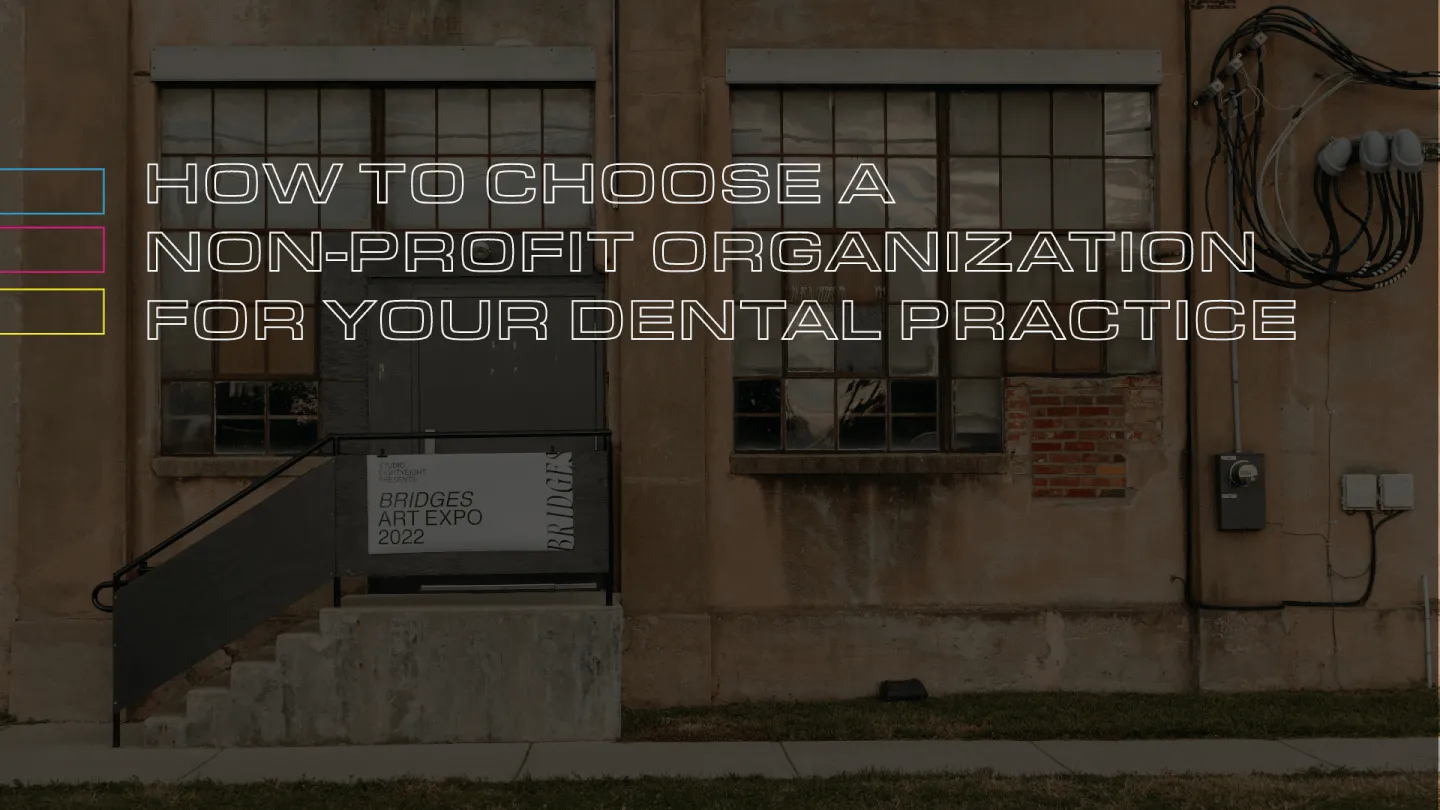How To Choose A Non-Profit Organization For Your Dental Practice
By now, you all have hopefully heard about S8E8 Summer Camp, but have you heard about my own deep, personal enthusiasm for it? Well, now you have. You better believe I was fearlessly slip-n-slidin’, strategizing my brains out in the rock-paper-scissors tournament, and representing Team Pink on the volleyball field (perhaps to their dismay). But there might be another event on the team calendar that can even top Summer Camp: S8E8 Gives Back.
S8E8 Gives Back is what we call the day the whole team meets up to shop for holiday presents and pack food boxes for the underserved people in our community. (You might have seen our goofy social posts featuring ugly Christmas sweaters and our team pushing shopping carts around Target.) It’s always a blast being on a team that I enjoy so much, but that day of the year is something special. We all believe in the work we do, but getting to spend a day on something that matters outside of our little dental marketing world makes us feel like a part of something much bigger.
It’s often said that humans like giving time, money, and other resources to charity because it “feels good.” But in my experience, that statement comes with some caveats. In my lifetime, I’ve given plenty of my mental, physical, and financial capital to things that didn’t really align with my values, and that can make giving feel taxing and unfulfilling. Of course, it’s not all about us, so it’s easy to convince ourselves to keep giving when we don’t feel emotionally involved in a positive way. But I think giving that is meaningful, personal, and within boundaries we set for ourselves has the best potential to benefit everyone involved.
Stacey Peters, who works at Ideal Practices advising their dental entrepreneur clients on everything from hiring to managing their finances, is an expert on charity-giving guidelines for businesses. Ideal Practices works with dental startups, and encourages all of their clients to find a nonprofit to incorporate regular donations and involvement into their practice culture. “It’s a reminder that there’s more to life than dentistry and making money,” Stacey said. An important thing to remember, for sure.
Stacey shared with me Ideal Practice’s rules for choosing a nonprofit, and I’m happy to pass on these trade secrets to all of you:
1: choose a non-profit that exists
Obviously! But before you say “duh” and move on, maybe take some time to jot down a few organizations you already know about. Choosing a nonprofit to get involved with can feel daunting, but starting with ones you already know about will probably put you a step toward finding one that aligns with your values. Chances are you’ve heard about them because they’re already somewhat personal to you.
Also, take advantage of a nonprofit organization that is already doing the work! You don’t have to do everything yourself, create a foundation, or organize an event. All you have to do is join in the good that is already happening.
2: choose a non-profit that's local
Giving can make us better members of our community. I’ve met a lot of dentists since working for S8E8, and almost every one of them has named their community as one of their top values. It makes sense – they’re your patients! – and some of them are probably benefiting from a nonprofit. You have the opportunity to be part of that intersectionality in their lives.
When you choose an organization that’s local, the opportunities for involvement beyond writing a check abound. According to Stacey, their dental clients will often get asked to be involved in local 5Ks and other fundraisers. Being present and physically involved in giving is how you ensure that your money follows your heart. Charity giving doesn’t really work the other way around. 😊
3: choose a non-profit that's authentic to you
“It’s just a gimmick if it’s not authentic,” Stacey said, and I agree.
Dr. Cliff Moore, of Moore Dentistry at Lewis Center in Ohio, is a military veteran who vowed to continue his service through work in the community when his military commitment ended in 2015. “The largest impact we have on our community is by providing free dental services on our Veterans Appreciation Day,” Dr. Moore said. “Our entire team is deeply involved in this service, and we have served dozens of local veterans.”
Because this cause is personal to Dr. Moore, he is committed to veterans for the long-term. Since they began serving veterans, the Moore Dental team has provided over $25,000 in free dental services. But they didn’t stop there. Healthcare for veterans is personal to Dr. Moore, but his staff are also big animal lovers. “Everyone in the office has at least one dog, and my family has two rescue dogs,” Dr. Moore said. Together, the team supports the Ohio Wildlife Center and works to help sheltered dogs find foster homes. Which brings me to the next rule:
4: choose a non-profit that involves the whole team
Okay, this isn’t one of Stacey’s rules, but I had to include it. Personally, I would not want to work for a company that didn’t do some sort of regular giving. I believe that businesses should have goals other than profit, like investing in their community and using their success and privileges to help others. As a full-time employee without a ton of extra time, I see having days of service built into our company calendar as a huge opportunity to serve others (and enjoy some fun team-building).
Stacey from Ideal Practices said that when companies give to nonprofits, “It positions them as an office of values. Employees tend to want to work for them.” In my experience, this is true, and it makes sense. Giving is contagious, and when you make it part of your business, you attract people who also like to find opportunities to put others first. Because of your values, you end up with a generous, compassionate team. Like Dr. Moore, you may even gather a staff who will lead the way in finding giving opportunities. Without the influence of his team, Dr. Moore’s practice wouldn’t be supporting wildlife and foster pups. “I’m always looking for ways to engage causes that [members of my team] are passionate about,” he said. “We are able to dedicate more time and energy outside of the office to these charitable causes because we are so passionate about them.” Team involvement makes the time and money investments worth it for everyone.
Last month, Studio 8E8 hosted Bridges, an arts event to benefit the Free to Smile Foundation, an organization that does pro-bono cleft palate corrections. The artists (aka the S8E8 team) were supported by the company and our bosses, who allowed us to use company time to work on our projects, offered a stipend for supplies, and hosted the event. But we, the employees, took the lead organizing and volunteering at the event, and the idea originated from members of our creative team who are passionate about the arts. The event was a hit, and will definitely be repeated in the years to come! And it’s just one example of how good, surprising things can happen when your team gets involved in giving.
P.S.: It’s not virtue-signaling
Stacey said that some Ideal Practices clients worry about virtue-signaling, doing something charitable only because it makes them look good. “The clients who embrace ‘the give’ are the busiest,” Stacey said, “But the nature of giving is that it’s contagious.”
Dr. Moore’s perspective is that giving is something that flows naturally out of his practice – it’s just part of who they are. “We believe that serving our community involves everything we do,” he said. “We show this not just through the charitable efforts in our community, but also by serving as an example for the best dental care and customer service in our community.”
I hope these stories and guidelines inspire you to be meaningful with your giving. Making an impact in the lives of others is a daily practice for all of the dentists we work with, and carrying that heart into other areas should feel fulfilling for you, your team, and the people you serve.


.webp)


